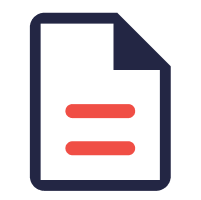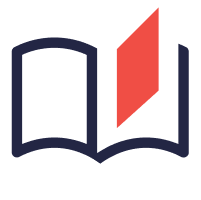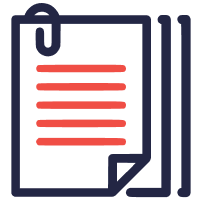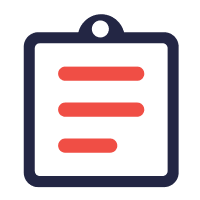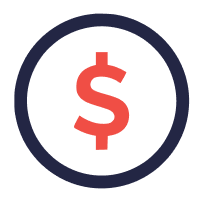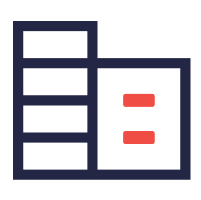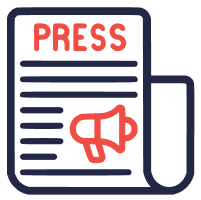The ability to forecast sales accurately is pivotal in enabling a company’s leadership to future-proof its strategic vision and run its day-to-day operations effectively. It helps companies plan for unexpected changes; a good forecast can indicate just how prepared an organization is for an economic uncertainty or a sudden shift. A company with a proven track record of forecast accuracy can instill confidence in business leaders about the numbers it creates and the trends it may show.
The value of sales forecasts is twofold. One, you’re able to identify whether you’re going to achieve or even exceed your sales target for the given quarter/month. It allows you to conduct accurate talent planning, purchase inventory ahead of time, and cut down on delays that your organization might otherwise encounter down the line. Two, if you run your forecast accurately and see that you might not hit your number, you can proactively execute remediation plans — you can find more leads and build more revenue out of certain accounts. Knowing how you will perform in a given period will have far-reaching benefits for your organization across job functions.
Forecasting Accurately Is Complex
Unfortunately, sales forecasting tends to be an imprecise art producing flawed insights despite the significant time investment. Predicting forecasts accurately has been hard primarily due to lack of deal-level visibility, forecasting based on a high-level coverage ratio, no differentiation at the segment, cumbersome roll-ups, dated tools and technologies, and disconnect between sales and other departments. McKinsey & Co reports that only 8% of CFOs express complete satisfaction with their forecasts; the remaining cite the huge time sink and overall inaccuracy as major complaints.
Few businesses use intelligent forecast reconciliation methods in practice, although that may change with awareness. There is scope to compete in analytics, even in the well-established forecasting practice.
Human-Judgment Based Forecasting vs AI-Powered Forecasting
Why do sales forecasting methods fail to achieve an optimal outcome? Quite simply, most methods lack rigor. Commonly used sales forecasting methods include intuitive forecasting, multivariate regression, weighted pipeline forecasting, moving-average forecasting, and activity-based deal scoring. Weighted pipeline forecasting is the dominant approach to sales forecasting. The inherent flaw in the weighted pipeline method is that it relies solely on human judgment. There are, however, numerous reasons why this method fails to be a good indicator of where we will end up at the end of a given forecasting period: overly optimistic or sandbagging reps, large deals affecting the weighted pipeline, CRM data not being updated, and shortcuts taken during sales stages.
In recent years, machine learning has transformed B2B sales forecasting by enhancing sales reps' knowledge to enable them to make more accurate predictions. True AI-powered sales forecasting solutions can make the whole process simpler and more accurate. AI is making a paradigm shift in sales enablement and coaching. The Sales function is becoming proactive rather than reactive, from instinct-driven to insight and data-driven. The system constantly learns from what works and what does not and self-optimizes so that advice and guidance continually improve by blending predictive analytics.
Aviso AI Forecasting Process – Coherent Forecast Across Hierarchies
Aviso’s AI-powered forecast drives confidence and helps take control of the quarter with accurate predictions from day one. Aviso also provides forecast explanations compared to traditional models that just give you a number without any rationale.
Aviso supports a multidimensional flexible hierarchy across products and different business pivots, and can also customize hierarchies per customer requirements. This gives the ability to drill down to any lower-level segment or pivot and see the forecast for that particular entity. In contrast, other tools are restricted by the hierarchy present in CRM.
Aviso's new-age capabilities around revenue intelligence include unified forecasting (top-down and bottom-up forecast) that blends the best of human and AI judgments with the most sophisticated global roll-up forecasting in the industry. The blended forecast is done at every node level with an optimal reconciliation method.
Top-Down Forecasting Method
Aviso’s top-down forecast considers the current market (macro view) and the potential for market growth (micro view) to determine the market percentage a firm can acquire over a certain period. It first identifies the total addressable market (TAM) – the current market size available for any business. Then it takes into account the relevant sales trends such as seasonality, pipeline conversion, etc., to predict the percentage of the market that will purchase your goods or services. For example, if the size of the market your product competes in is $100 million, a company may estimate that they can win 5 percent of that market, making their sales forecast $5 million for the year.
Here are some of the benefits of top-down forecasting:
- Provides a comprehensive view of the revenue potential and helps better understand the target audience and demographics.
- Uses industry size estimates as a starting point before these are reduced to sales targets appropriate for your business.
- Quickly and easily connects your revenue predictions to the general market trend.
- Benefits mature businesses with years of financial results, a global reach, and various market segments such as the Fortune 500 companies.
- Frequently employed by early-stage businesses that lack past financial data. Benefits these companies in quickly verifying revenue potential in undefined markets.
Bottom-Up Forecasting Method
The most precise forecasting begins with a top-down analysis that aids the organization in developing a high-level picture of the market opportunity, its capacity to penetrate it, and related targets and objectives. Following that, firms should do a rigorous bottom-up forecast to ensure they have the required pieces to execute and meet their targets.
Aviso’s bottom-up forecasting predicts revenue at the rep level rather than at the whole industry level, improving forecast accuracy. In contrast to top-down forecasting, the bottom-up method starts with a micro, inside-out perspective and builds to a macro view. It starts with sales projections from reps who report on what they think can close based on the opportunities they have lined up. The bottom-up method relies less on outside market data and instead uses internal opportunity-specific data like average closing amounts, win probabilities, pull-ins, push-outs, etc.
Bottom-up forecasting has disrupted the sales industry by offering more accurate projections to sales teams, allowing them to make better judgments regarding their quotas. Here are some of the benefits of bottom-up forecasting:
- Provides a comprehensive view of the revenue potential and helps better understand the target audience and demographics.
- Analyzes the contribution of every deal toward the forecast to identify which actions have the most influence on closing an opportunity.
- Starts from ground level and involves sales reps and managers' inputs.
- Benefits organizations that are seasonal or have much volatility throughout the year.
- Helps start-ups to make informed hiring and budgeting decisions.
Optimal Reconciliation of Hierarchical Time Series
Companies use time-series data to estimate future demand using forecasting methodologies. These time series are frequently depicted as a hierarchy. A set of time series linked by a hierarchical structure is referred to as a hierarchical time series (HTS).
Hierarchical Time-Series
The above figure depicts an example of a simple hierarchy, with "Global Sales" as the highest aggregated level, followed by separate regions and then individual countries. When working with hierarchical time series, it's important to consider how the forecasts at each level add up. Lower-level forecasts may or may not add up to the overall forecasted value; hence reconciliation is necessary.
The variation as we go down the hierarchy will be a lot more than the Global because the number of deals is low compared to the global level. With fewer deals, the sample size decreases, and a single deal can become a large enough deal to impact variation from a roll-up standpoint.
The best possible reconciled forecasts are obtained by an optimal combination of the forecasts produced at all hierarchy levels. Optimal reconciliation ensures the forecasts sum up appropriately by readjusting the numbers generated by independent models on a network of hierarchically linked time series. This methodology leverages more available information than traditional methods and produces more accurate forecasts than any standalone bottom-up or top-down methods. The blended forecast is done at every node level instead of just the Global level with an optimal reconciliation method. This minimizes the error while redistributing or reconciling the numbers that roll up to the Global level, giving us 90%+ accuracy even at the lowest level.
Comparing The Accuracy of Aviso’s AI Forecast With Human Judgment
Aviso’s automated intelligent machine learning framework creates a forecast that is free of human bias and leads to far better business outcomes.
Aviso Enterprise Customer Example
Aviso AI forecast accuracy stands head and shoulders above human judgment.
The table above shows that using Aviso’s AI forecast appropriately, Aviso’s customers could see $373M out of the actual booked $401M in their forecast as early as Week 4 of the quarter. This also helps to identify the non-AI captured (risky) $28M early and thereby the company can target to increase their pipeline conversion by tapping into this $28M with significant time left before quarter close.
Conclusion
Accurate sales forecasting is an essential task for sales reps, but it's often difficult to predict the outcome of a deal in advance without an intelligent system in place. Human judgment has its own biases and cannot truly assess the deal's potential. Sales reps can overcome this difficulty with AI-based revenue forecasting solutions.
If you are willing to leverage the tools and implement best practices that align well with your overall business, you are well on your way to bringing in predictable and reliable revenue. Interested to learn more about Aviso’s AI sales forecasting capabilities? Set up a consultation with our sales forecasting experts here to see how we can help.

















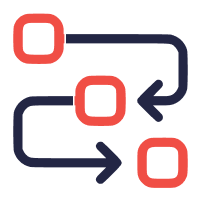 BY USECASES
BY USECASES
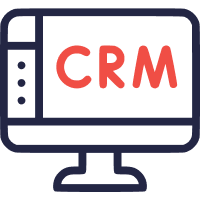 BY CRM INTEGRATION
BY CRM INTEGRATION
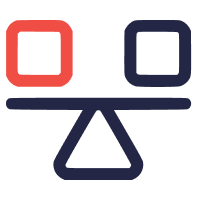 COMPARE
COMPARE
